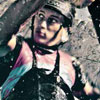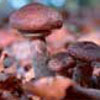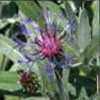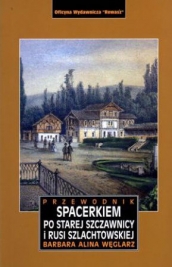Aktualności
ARTYKUŁ Z NOWEGO NUMERU: Rybołówstwo w górnym Dunajcu - Jan Tyszkiewicz
Coś dla rybaków i smakoszy ryb. Jan Tyszkiewicz w swoim artykule zdradzi nam sekrety rybołówstwa w górnym Dunajcu.
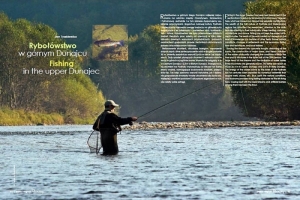
KUP NOWY WIOSENNY NUMER MAGAZYNU ----------------->
BUY THE NEW ISSUE OF MAGAZINE---------------------------->
Jan Tyszkiewicz
RYBOŁÓWSTWO W GÓRNYM DUNAJCU
(ang. FISHING IN THE UPPER DUNAJEC)
Rybołówstwo w górnym biegu Dunajca najlepiej rozpoznano na odcinku między Czorsztynem, Szczawnicą i Tylmanową. Jednakże i w tym zakresie dysponujemy wyłącznie przyczynkami. Bogactwo ludowej kultury Podhala i Sądeczcyzny kierowało uwagę badaczy na główne nurty świadczące o jej odrębności – pasterstwo, strój, budownictwo i tańce. Rybołówstwo nie było przedmiotem bliższych badań. Rezultaty prac zależą od orientacji w kilku dziedzinach: dawnych warunkach przyrodniczych, zmianach osadnictwa i gospodarki, prawie i technikach dotyczących połowu oraz miejscowym folklorze.
Betonowanie strumieni, obudowa brzegów, wznoszenie dużych zapór, silne zanieczyszczenie wód w drugiej połowie XX w. zmieniły zasadniczo warunki życia w rzece i jej dopływach. Duży spadek płynących strumieni i wahania stanów wody w górach są ogólnie znane. Wartości te osiągają: 4 m w Czarnym Dunajcu i 2,3 m w Białym Dunajcu. Energię wod- ną strumieni na Podhalu wykorzystują od kilkuset lat liczne młyny wodne, wymagające budowania stawideł, przepustów itp. Tak więc zarówno warunki naturalne, jak i działania gospodarcze stwarzały trwałe utrudnienia dla życia ryb. Najlepiej z wartkimi potokami i sztucznymi zagrodami w nurcie radziły sobie pstrągi.
Wszystkie wywiady, których udzielają doświadczeni rybacy, wskazują na potrzebę dobrej znajomości najmniejszych nawet zakątków, zagłębień i toni wodnych na obszarze połowów. „Zwyczaje” ryb, żerowania, rozmnażania, miejsca pobytu ulegają stałym zmianom. W memoriale z końca 1918 roku znajdu- jemy stwierdzenia, że przez wszystkich znawców rybactwa kra- jowego Dunajec został uznany za najrybniejszą rzekę Galicji. „Bogactwo rybostanu Dunajca, zwłaszcza pod względem ryb łososiowych i świnek jest wprost zdumiewające”. W rewirach pow. nowosądeckiego łowiono dziennie w 1917 roku 50-200 kg łososi; w pow. nowotarskim 1000 kg świnek, 200 kg pstrągów i lipieni oraz 50 kg łososi. Górny Dunajec był w pocz. XX w. wylęgarnią troci, łososi i świnek. Do 1914 r. Towarzystwo Rybackie w Krakowie intensywnie zarybiało Dunajec narybkiem: łososia, troci i pstrąga strumieniowego. Niestety, na dwóch odcinkach – między Maniowymi i Frydmanem (4-5 km) i koło Czorsztyna (2 km) – oba brzegi znajdowały się w rękach węgierskich. To powodowało bezwzględne tępienie ryb, wbrew podpisanym umowom..
Cały artykuł znajdą Państwo w najnowszym wiosennym numerze magazynu "Polski Region Pieniny". Zapraszamy.
ENGLISH VERSION:
Fishing in the upper Dunajec has been best researched in the section from Czorsztyn by Szczawnica to Tylmanowa. Yet even here, what we have at our disposal are separate contributions. The wealth of the folk culture of Podhale and Sądeczcyzna regions has attracted the researchers’ attention to the main features attesting to their individuality: sheep herding, costume, architecture, and dance. Fishing has not been the subject of indepth studies. The results of the work carried out depend on the level of knowledge in a number of other fields: former natural conditions, changes in settlements and the economy, fishing laws and techniques, and local folklore.
Forcing the streams into concrete troughs, armouring of the banks, the construction of major dams, and heavy pollution of the waters profoundly changed the conditions of life in the river and its tributaries in the latter half of the 20th century. The large head of the streams and the oscillation of water tables in the mountains are generally known. The latter can reach as much as 4 m in Czarny Dunajec and 2.3 m in Biały Dunajec. The energy of the waters borne by the rivers of the Podhale has for centuries been exploited by numerous watermills that require weirs, sluices, etc. Thus, both the natural conditions, and economy provided long-lasting obstacles for the fish living here. Coping best with the rapid streams and artificial barriers among them has been the trout.
All interviews with experienced fishermen prove that it is necessary to have a good knowledge of even the smallest nooks, corners, and deeps within the area where you fish. The ‘customs’, feeding patterns, mating behaviour, and mainstays of the fish constantly change. A memorial from late 1918 repeatedly claims that all the national fishing experts believe the Dunajec to be the most fish-abundant river of Galicia. ‘The wealth of the fish, especially of the salmon family and nase (sneep), in the Dunajec is downright surprising.’ In the fishing precincts of Nowy Sącz County anything from 50 to 200 kg of salmon was caught daily in 1917; and in Nowy Targ County: 1000 kg of nase, 200 kg of trout and grayling, and 50 kg of salmon. In the early 20th century, the upper Dunajec was the breeding ground for salmon trout, salmon, and nase. Until 1914, the Fishing Society of Kraków intensively restocked the Dunajec with salmon, salmon trout and brown trout fry. Unfortunately, in two sections – from Maniowy to Frydman (along 4 or 5 km) and near Czorsztyn (along 2 km) – both
the banks were in Hungarian hands, which resulted in ruthless destruction of the fish, in violation of the signed agreements..
You can find more in the the latest issue of "Polski Region Pieniny" magazine. Enjoy!
